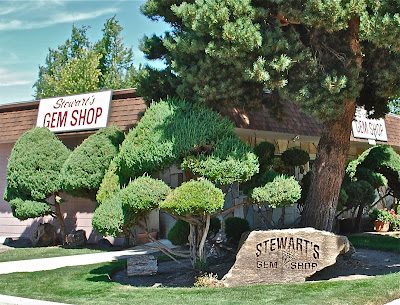garnets I've yet found. These 6-rayed garnets are all of the highest grade.
August and September saw a whirlwind of activity that left little time for updating the blog. Tough to believe that nearly two months have passed since my last blog entry.
I managed to complete another road trip to the Idaho Panhandle National Forest and went searching for rough star garnets with some new friends. We found some incredible material! As the weather gets colder, I'm looking forward to cutting some of the silky, raspberry colored pieces of rough. Look for a future blog entry showing the process of cutting. Hopefully, the stones will display the elusive 6 rays!
As for the writing of the book, I'm working on the second draft of the book and the goal is to complete it by the end of the year. During the summer I visited some beautiful locales, met many wonderful people and uncovered a plethora of information. There has been a wonderful process of discovery along the way and I'm amazed at how much the narrative has changed and grown from my initial outline.
The beautifully landscaped entrance to the well-kept shop near downtown Boise.
Central to the story of Idaho Star Garnet is the Stewart Family. During the 1950s, Dudley Stewart became enamored of the stone and was the first to figure out how to reliably cut the garnet crystals so that they would display stars. Over the next couple of decades he became a constant promoter of the star garnets of Idaho and was instrumental in making it the official state gemstone of Idaho. He built up a successful family business around star garnets and other now famous Idaho gem materials. The shop is still run by the Stewart family and during a research trip to Boise, Idaho I had the pleasure of visiting.
Brent Stewart cutting a star garnet on gem cutting equipment originally built by his grandfather.
Brent Stewart, grandson of Dudley Stewart was in that day and graciously shared his knowledge of how star garnets are cut from the rough. Much of the original lapidary equipment hand-built by Dudley is still in service to this day and the photo above shows Brent cutting and evaluating a star garnet sample that I brought to the shop. Many people who have mined at the USFS site bring their rough to Brent for cutting. If you're looking for a quality star garnet gem cutter I can highly recommend his services.







